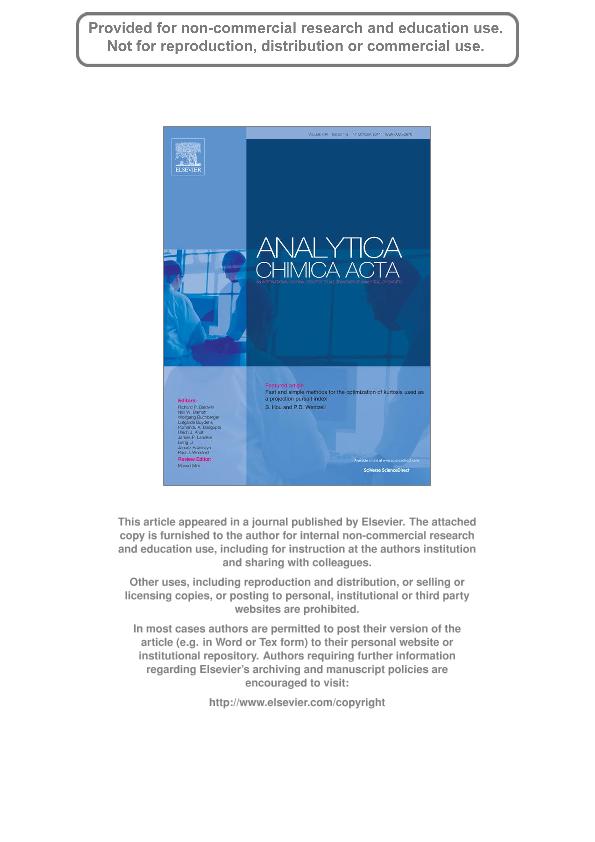Artículo
Electrochemical quantification of 2,6-diisopropylphenol (propofol)
Fecha de publicación:
10/2011
Editorial:
Elsevier Science
Revista:
Analytica Chimica Acta
ISSN:
0003-2670
Idioma:
Inglés
Tipo de recurso:
Artículo publicado
Clasificación temática:
Resumen
2,6-Diisopropylphenol (propofol) is a potent anesthetic drug with fast onset of the anesthetic effect and short recovery time for the patients. Outside of the United States, propofol is widely used in performing target controlled infusion anesthesia. With the long term vision of an electrochemical sensor for in vivo monitoring and feedback controlled dosing of propofol in blood, different alternatives for the electrochemical quantification of propofol using diverse working electrodes and experimental conditions are presented in this contribution.When the electrochemical oxidation of propofol takes place on a glassy carbon working electrode, an electrochemically active film grows on the electrode surface. The reduction current of the film is proportional to the propofol concentration and the accumulation time. Based on these findings a stripping analytical method was developed for the detection of propofol in acidic solutions between 0 and 30 μM, with a detection limit of 5.5 ± 0.4 μM.By restricting the scanned potential window between 0.5. V and 1.0. V in cyclic voltammetric experiments, the formation of the electrochemically active polymer can be prevented. This allowed the development of a direct voltammetric method for assessing propofol in acidic solutions between 0 and 30 μM, with a 3.2 ± 0.1 μM (n= 3) detection limit.The stripping method has a better sensitivity but somewhat worse reproducibility because the electrode surface has to be renewed between each experiment. The direct method does not require the renewal of the electrode surface between measurements but has no adequate selectivity towards the common interfering compounds. © 2011 Elsevier B.V.
Archivos asociados
Licencia
Identificadores
Colecciones
Articulos(INFIQC)
Articulos de INST.DE INVESTIGACIONES EN FISICO- QUIMICA DE CORDOBA
Articulos de INST.DE INVESTIGACIONES EN FISICO- QUIMICA DE CORDOBA
Citación
Langmaier, Jan; Garay, Fernando Sebastian; Kivlehan, Francine; Chaum, Edward; Lindner, Erno; Electrochemical quantification of 2,6-diisopropylphenol (propofol); Elsevier Science; Analytica Chimica Acta; 704; 1-2; 10-2011; 63-67
Compartir
Altmétricas




